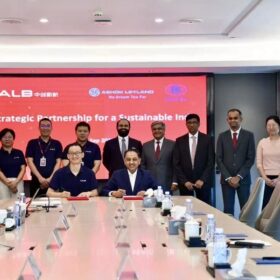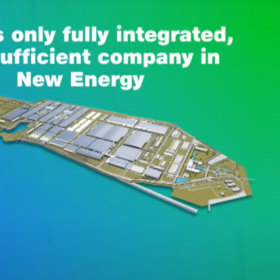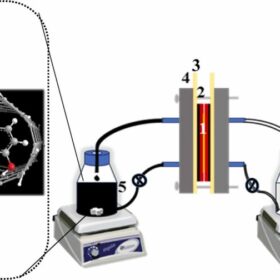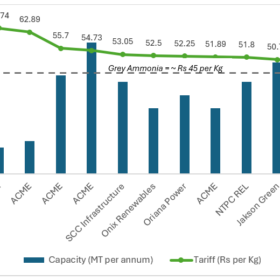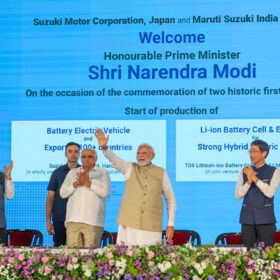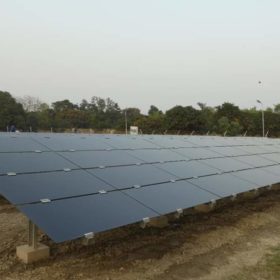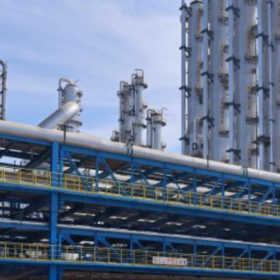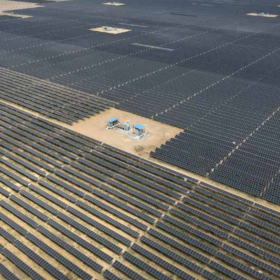Ashok Leyland to enter battery manufacturing
Ashok Leyland will develop and manufacture batteries for EVs and energy storage systems in partnership with China’s CALB Group.
The Hydrogen Stream: Greenzo Energy secures order from Jindal Stainless Ltd to set up electrolyser-based green hydrogen plant in Odisha
Greenzo Energy India Ltd has received an order from Jindal Stainless Ltd (JSL), India’s largest stainless-steel manufacturer, for the supply, erection, installation, and commissioning of an advanced electrolyser-based green hydrogen plant at JSL’s Kalinga Nagar Industrial Complex in Jajpur, Odisha.
Novel MPPT technique for EV charging combined with PV, fuel cells
Scientists in India have designed a system that uses PV panels, a proton-exchange membrane fuel cell, battery storage, and a supercapacitor. It also relies on an adaptive neuro-fuzzy inference system-based MPPT that reportedly achieves an efficiency of 98.7%.
Reliance Industries Ltd’s battery gigafactory set to begin operations in 2026 with an initial annual capacity of 40 GWh
Reliance Industries Limited (RIL) is set to begin production at its upcoming battery gigafactory in 2026, with an initial annual capacity of 40 GWh. The facility will later be modularly scaled up to 100 GWh per annum, announced Anant Ambani, executive director of RIL, during the company’s annual general meeting recently.
Researchers improve zinc flow battery performance by using nanotube-encapsulated organic redox molecule catholytes
Researchers at CSIR-Central Salt and Marine Chemicals Research Institute thermally encapsulated organic redox molecules within multiwalled carbon nanotubes to form a stable and flowable slurry for use as high-capacity catholytes in aqueous zinc flow batteries. The assembled batteries using these catholytes exhibited excellent cycling stability at an applied current density of 1.0 mA cm⁻², with a Coulombic efficiency of 99%.
Green ammonia is only 10% costlier than grey in the latest SIGHT Mode 2A auctions
The lowest green ammonia price discovered so far in the SIGHT Mode 2A auctions is just 10.1% higher than the current grey ammonia prices in India (US$515 per MT). Notably, the low cost of Rs 49.75 per kg in the Mode 2A auctions is almost half of a similar green ammonia auction conducted by H2Global in 2024, suggesting an imminent price parity between grey and green ammonia.
Prime Minister Narendra Modi inaugurates TDSG’s lithium battery cell, electrode manufacturing facility
Prime Minister Narendra Modi inaugurated the next phase of India’s battery ecosystem with the start of local production of battery electrodes at TDS Lithium-Ion Battery Gujarat Pvt Ltd (TDSG), Maruti Suzuki’s fellow subsidiary.
Lithium ion battery company Energy Renaissance goes into administration
The New South Wales-based lithium ion battery company Energy Renaissance has gone into administration, just months after celebrating a decade in business.
TCIL seeks EPC partner for solar microgrid projects in Agalega Islands
Telecommunications Consultants India Ltd (TCIL) is seeking an EPC partner for a pre-bid tieup to set up three solar microgrids with modular battery energy storage systems at Agalega Islands, Republic of Mauritius.
Building 500 GW: Powering India’s clean energy transition and energy independence
India is already investing in energy storage solutions such as batteries and pumped storage to enable greater integration of renewable energy into the grid. However, this alone may not be sufficient. It’s time to also look at demand management to enable dovetail between renewable energy generation and demand.
